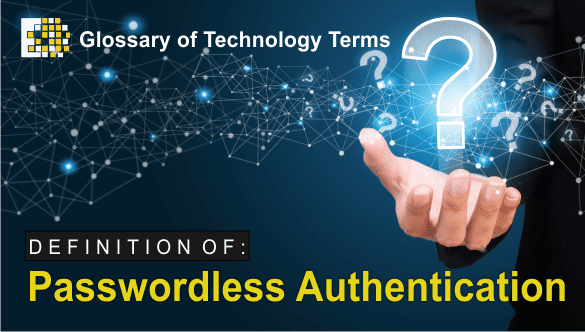Passwordless authentication is a verification process where a user confirms his or her identity without the requirement of manually entering a string of characters. Authentication methods include biometrics, security tokens and piggybacking off of another application, service or device which has already authenticated the user.
The benefits of using passwordless authentication include:
Improved user experience (UX).
Faster login times into applications or devices.
Less maintenance of passwords required for IT staff.
Reduced chance of phishing attacks, password re-use or password leaks.
Types of passwordless authentication
With passwordless authentication, users are presented with one or multiple methods of signing into an application or device without the need to enter a password. Common types of passwordless authentication include email-based, SMS-based, multi-factor, biometrics or passwordless authentication for logged-in users.
Authentication through email includes verifying a user with a magic link or one-time code. With a magic link, the user first enters their email and a unique token is created for the user and sent to them by email. The user clicks the link and the service being used will identify the token and exchange it for a live token, logging the user in. With a one-time code, a user will enter their email address and an email will then be sent to them with a unique one-time code. The user then enters the code into the service, which will verify the user and log them in.
Authentication through SMS will begin with the user entering their phone number, prompting a one-time code to be sent to their phone. The user will input the code into the service, where the service will verify the code and phone number, and log in the user. However, SMS passwordless authentication may be less secure than other methods of passwordless authentication as SMS authentications have recorded multiple attacks in the past. SMS and email-based passwordless authentication can also log into a service through a second device through push confirmations, using the first connected device as a communication channel.
Multi-factor authentication uses any (typically) three authentication factors to log in a user such as security questions, PIN codes and contact information. What these factors are depends on the device/service.
Biometrics is another common form of passwordless authentication. Biometrics focuses on technology such as fingerprint scanners or face scans. This form of authentication is commonly found on mobile devices such as smartphones. Android devices will commonly use fingerprint scanners (normally located on the power button, back of the device or even under the front display), while Apple devices (which used to use this authentication format) now use face authentication.
CCNY Tech is a technology company location in Utica, New York that focuses on the whole lifecycle of information technology. From new or used hardware to service and end-of-life electronic recycling, CCNY Tech is here for your business or organization. We support you on your entire IT journey and act as a true partner in keeping you productive and increasing uptime, while reducing employee frustrations. Give CCNY Tech a call at 1-800-566-4786 for the right IT solution for your organization.
